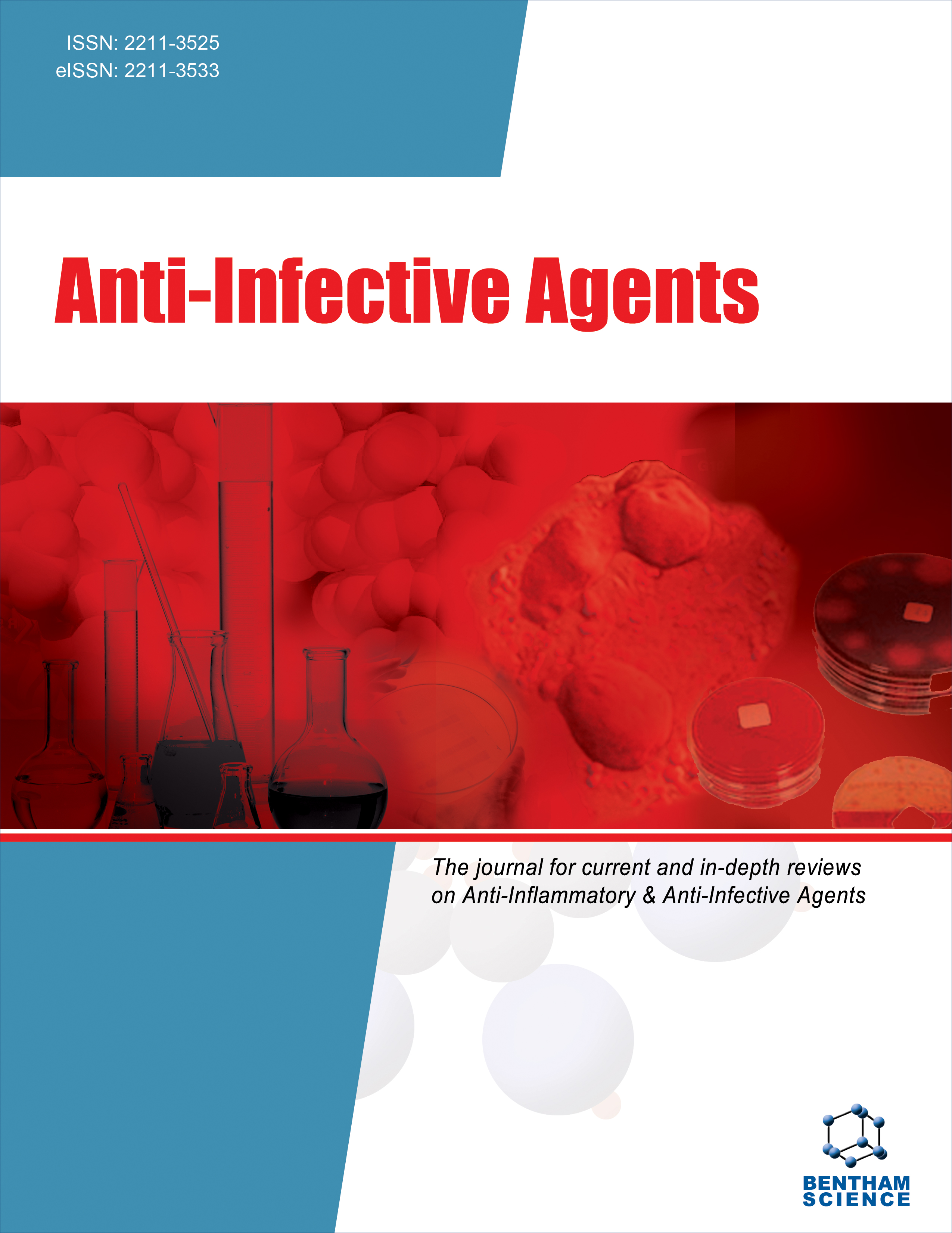- Home
- A-Z Publications
- Anti-Infective Agents
- Issue Home
Anti-Infective Agents - Current Issue
Volume 23, Issue 3, 2025
-
-
A Comprehensive Review on the Antimicrobial Activities and Structure-Activity Relationships (SARs) of Rhodanine Analogues
More LessRhodanines are five-member heterocyclics having sulfur, nitrogen, and oxygen atoms in their ring structure and exhibit potent as well as a broad range of pharmacological activities. They are thiazolidine derivatives and are well-known in medicinal chemistry for their wide spectrum of antimicrobial activities. Various modifications can be made to the structure of the rhodanine ring. Studies in recent years have validated Read More
-
-
-
Role of Essential oils in Wound Healing
More LessAuthors: Vibha Kumari, Shiv Bahadur and Meenakshi BajpaiAs we know, the skin is part of our body, which acts as a protective barrier and protects us from deleterious agents. Any damage or destruction to the skin causes a rupture of the epidermis layer of skin. These wounds may lead to many problems if untreated, such as infection and inflammation, which result in slowing the natural wound healing process. In recent years, there have been numerous approaches and th Read More
-
-
-
Anticipating Viral Challenges: A Perspective on Phytochemicals against Existing and Emerging Viruses
More LessAuthors: Sayan Sharma, Puja Ghosh, Chirantan Kar and Rajgourab GhoshViral infections impact millions of individuals annually and in 2018, the WHO called for global preparedness to address potential high-mortality pathogens, referred to as “Pathogen X,” which can include fungi, viruses, parasites, or prions. The constant evolution of RNA viruses leads to continually changing variants, challenging the effectiveness of vaccines and drugs. In underserved healthcare regions, plant-based phyt Read More
-
-
-
Successful Identification of Key Phytoconstituents of Emblica officinalis as Potential Multitargeting Anti-Inflammatory and Antifungal Agents
More LessAuthors: Diksha Choudhary, Nidhi Rani and Rajwinder KaurIntroductionFungal infections are growing more rapidly and becoming a public health concern worldwide. The use of herbal medicines is now increasing due to their many functional properties with fewer side effects. Emblica officinalis, an important medicinal plant, exhibits many therapeutic properties.MethodsIn this article, the active phytoconstituents of Emblica officinalis were explored for their multitargeting ac Read More
-
Volumes & issues
Most Read This Month Most Read RSS feed
Article
content/journals/aia
Journal
10
5
false
en


